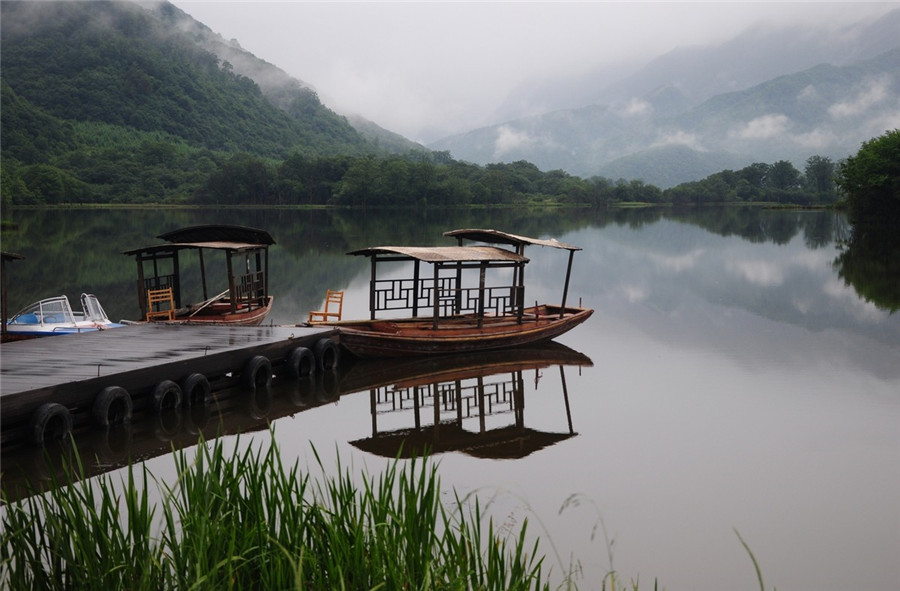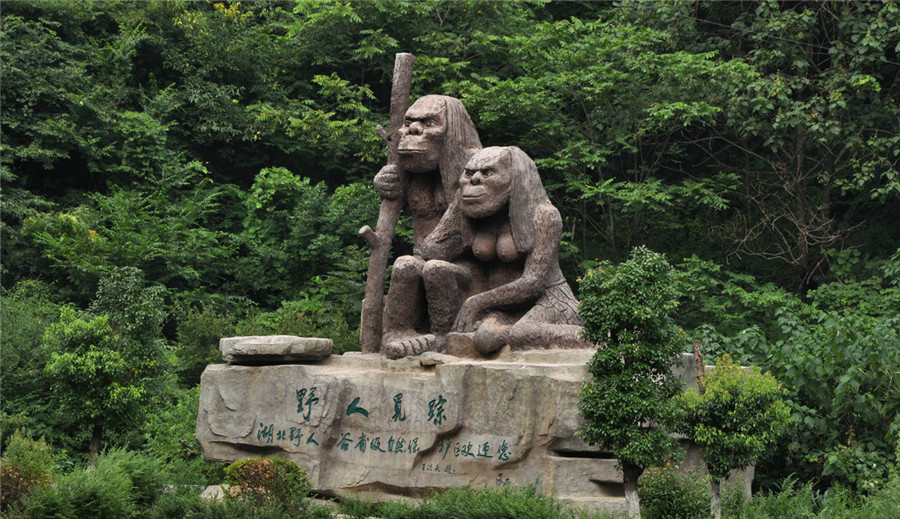
Shennongjia Nature Reserve, Shiyan, Hubei
Shennongjia Nature Reserve, located in eastern Hubei Province, shares its border with Chongqing Municipality to the west and Baokang County of Hubei Province to the east. Covering an area of 803,833 acres (about 3,253 square kilometers), it was approved as Shennongjia Global Geopark in 2013 and subsequently listed as a UNESCO World Heritage site in 2016. Renowned for its stunning natural scenery, rare foliage, endangered animals, and legendary tales such as the mysterious “Wild Man,” the reserve attracts numerous tourists, researchers, and scientists each year.
Origin of Name:
Shennongjia Forestry District derives its name from the renowned Chinese chief in prehistoric times, Shennong, also known as Yandi. Regarded as one of the two ancestors of the Chinese people (alongside Huangdi), Shennong is credited with inventing crockery, discovering herbal medicine through personal herb tasting, and teaching cultivation techniques. Despite reportedly suffering from poisoning over seventy times while tasting herbs in the area, he eventually discovered numerous valuable herbal medicines, leading to the naming of Shennongjia in his honor.

Landscape and The Four Scenic Areas in Shengnongjia Scenic Area:
Shennongding Peak, the highest mountain in the scenic area, stands at 10,188 feet (about 3105.4 meters) above sea level, while the lowest point, Shizhu River in southeastern Shennongjia Forestry District, lies at only 1,306 feet (about 398 meters) above sea level. Visitors can experience the diverse beauty of the four seasons at various altitudes, with blooming flowers, diverse trees such as firs, spruces, and dove trees, and captivating landscapes including virgin forests, clear streams, grand waterfalls, and peculiar caves.
Shengnong Ding Scenic Area (神农顶景区)
Shengnong Ding is the core of Shennongjia Nature Reserve. Four peaks of more than 3000 meters high combine to the ridge of central China and the confluence of Yangtze River- the Han River. Xiaguping scenic area is inhabited by Tujia Ethnic Group featuring unique ethnic customs and culture. Most parts of Dajiu Lake scenic area are wetlands of Yagao Mountain. In this scenic spot, tourists are able to see the highest peak in central China- the Shennongding Peak, scenery of clouds shrouding stones forests in Fengjingya, grassland scenery of Yagao Mountain, visit the paradise of golden monkeys- Jinhou Mountain and Shennong Stream. Further, visitors can track down the trace of wild men through Banbi Rock and Southern Heaven Gate, and traverse the primal forest cannon, even ski.
Yantian Scenic Area (燕天景区)
Yantian scenic spot sets a good example for developing eco-tourism. The three highlights in this are: Tianmenya, Yanziya and Hongping Gallery. Tianmenya is located 12 km from Hongping Town. It is 2,328m above sea level. Two peaks are connected by a bridge. Walking on the bridge brings to a fairyland of mists and clouds. Yanziya is formed when a bomb was used to blow the mountains apart and make the 209 National Road. It is famous for thousands of Himalayan Swiftlet living in a cave located 2300 meters above sea level. The ancient rhinoceros cave is discovered by archeologists in 1995 and was named as “the historic site of ancient human of Old Stone Age in Shennongjia”. The Hongping Valley is also called “Shennong’s ladder”. Scenery here is especially picturesque with lush foliages, steep cliffs, lofty peaks, pristine waters.
Xiangxi Source Scenic Area (香溪源景区)
Located in the southeast of Shengnongjia Nature Reserve, Xiangxiyuan (literally Fragrant Stream Source) Scenic Area is composed of three spots: Xiangxi Source, Shennong Altar, and Laojun Mountain. Xiangxiyuan is the source of Xiangxi River. The water is said has nourished Wang Zhaojun (one of the Four Beauties of ancient China, lived in Han Dynasty, 202B.C.-220A.D.) and Qu Yuan (339-278B.C., the first great Chinese patriotic poet); it contains 14 kinds of minerals and legend has that Yan Emperor once cleaned medical plants there. Shengnong Altar was built in commemoration of Yan Emperor with a statue of Shengnong standing 21 meters high. Laojun Mountain is a heavily forested region. Legend goes that Laojun (Lao Zi, around 571-471B.C., the founder of Taoism) once practiced alchemy there, hence the name. Tourist can watch bonfire evening, listen to chime music, and hike along the Xiangxi River.
Yuanquan River Scenic Area (玉泉河景区)
Yuanquan River Scenic Area is located at the northeast of Shennongjia. It is a comprehensive tourist area surrounding the Yuquan River (Jade Spring River), themed at expedition and challenge, and features high mountain lakes, streams and valleys. Being subdivided into three sightseeing areas, say, Songlang Mountain, Yuquan River and Zhangshu Lawn, it boasts over 30 scenic spots such as Shennongjia Ecomuseum, Liudao Gorge, Wushan Lake, Zhanggong Ancestral Hall. As the only regional natural museum in central China, the museum introduces the mysterious Shennongjia “wild men”, the ingenious root carving art, the ancient civilization of Shennongjia with fossils; it collects the only Rhinoceros sinensis fossil in the world. Liudao Gorge is a main river runs through Shennongjia Nature Reserve which flows easterly from Shennong Ding to Fenghuang Strip, Jinhou Mountan and Laojun Mountain, and the Wushan Lake, stands more than 600 meters high, offers fantastic lake landscape.
Rare Species:
Notably, the reserve is home to various “white animals,” including albino bear, monkeys, roes, deer, squirrels, snakes, crows, and toads. Additionally, the region boasts over two thousand species of precious herbs, offering a natural treasure trove for herbal medicine enthusiasts.
Story of Wild Man:
The Wild Man of Shennongjia is a mysterious figure akin to Nessie and UFOs, with records of sightings dating back to ancient Chinese texts. Described as ape-like creatures around two meters tall, covered in red or brown hair, and capable of swift movement while standing erect, sightings of the Wild Man have persisted since the 1970s. Despite numerous research studies yielding evidence such as footprints and hair, the Wild Man remains elusive, with sightings reported by hikers and visitors, though none have been captured to date.

How to Get to Shennongjia Nature Reserve:
The reserve comprises three central towns: Muyu, Hongping, and Songbai, with Muyu serving as the main tourist center. Shuttle buses from Muyu transport visitors to various scenic spots within the reserve, with car rental options also available. Additionally, visitors can reach Shennongjia via flights to Shennongjia Hongping Airport from Shanghai, Wuhan, or Chongqing, or by coach from cities such as Shiyan, Wuhan, Yichang, and Chongqing.
Recommended Accommodation:
Accommodation options in Muyu Town include Shennong Shanzhuang and Tianlu Hotel, while Songbai Town offers Shennongjia Hotel.
Ticket Information and Opening Hours:
Tickets for the reserve’s scenic areas range from CNY 22.5 to CNY 269, with different pricing for high and low seasons. The reserve is open from 06:30 to 17:30 from April to October and from 07:00 to 17:30 from October to the next March, offering various activities including skiing in the winter months.
Tips:
Visitors are advised to hire local guides due to the vastness of the virgin forests, pack rain gear, knives, matches, compasses, warm clothing, and wear appropriate attire and footwear for forest exploration to prevent insect bites and navigation challenges.
More in UNESCO World Heritage Web: https://whc.unesco.org/en/list/1509/














